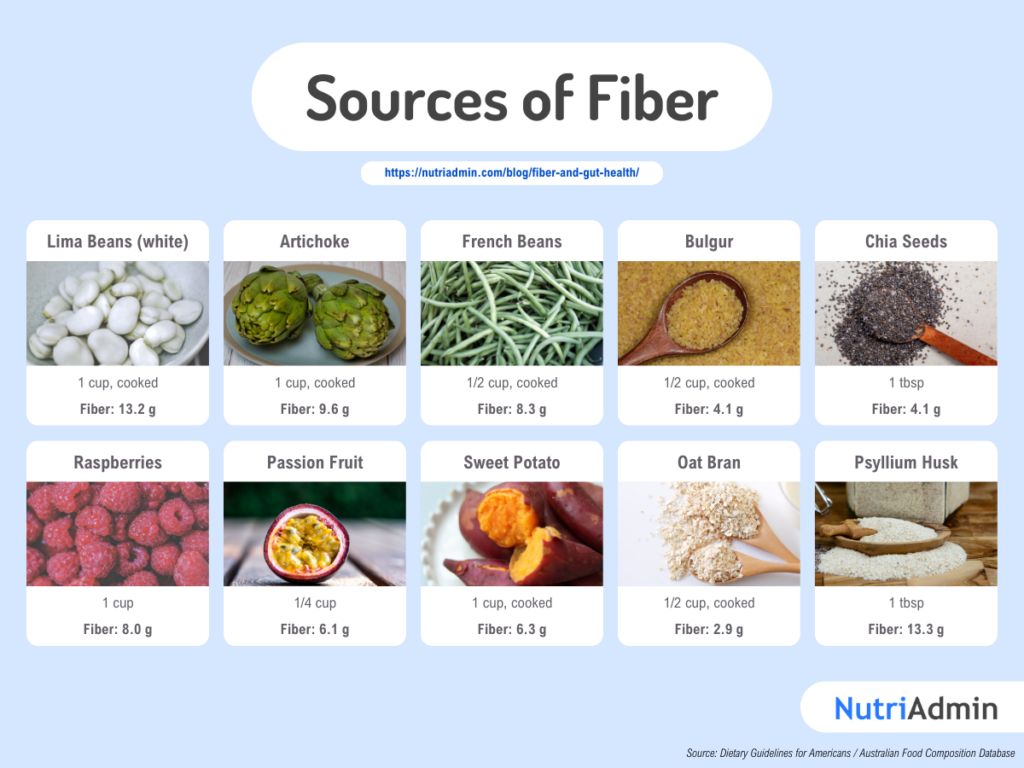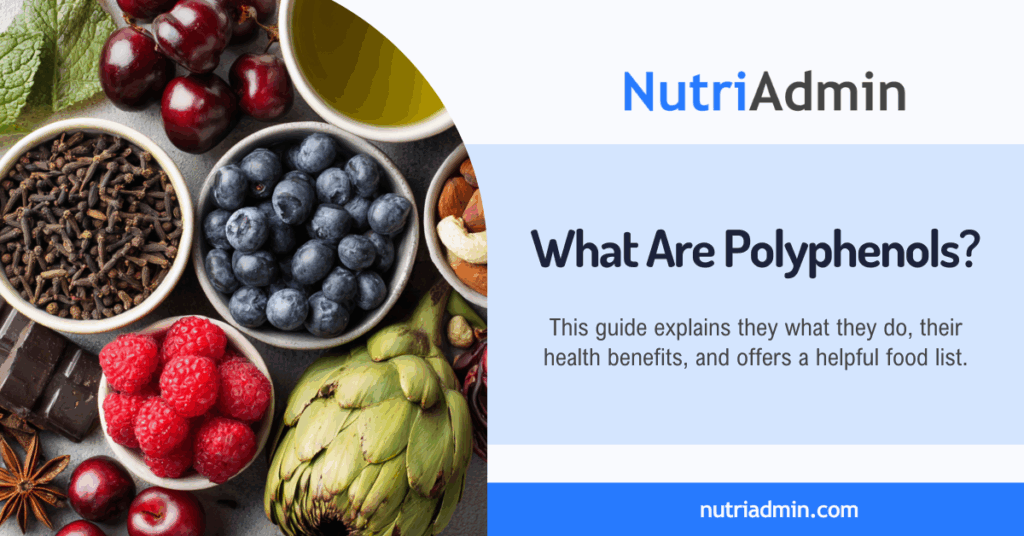While many people are focusing on hitting their protein goals—tracking every gram consumed to achieve their target intake—there’s another nutritional powerhouse that deserves just as much attention: fiber. Often overlooked, fiber plays a vital role in supporting gut health and promoting overall wellness.
Unfortunately, in a world dominated by quick, processed meals, many adults struggle to consume the recommended 25 to 30 grams of fiber each day. Fiber is important for various reasons beyond just aiding digestion. It promotes gut health, aids in weight management, and reduces the risk of several diseases.
In this article, we will look at different types of fiber, how they benefit gut health, and simple ways to include more fiber in our daily meals.
What is Fiber?
Fiber consists of a diverse group of carbohydrates found in plant foods that our bodies cannot fully digest. When we consume fiber, it moves through our digestive system without being broken down in the small intestine.
Upon reaching the large intestine, beneficial gut bacteria ferment some types of fiber, creating short-chain fatty acids that are essential for maintaining gut health. These fatty acids provide energy to colon cells and help strengthen the gut barrier. Additionally, dietary fiber enhances stool bulk, which aids in regular bowel movements and can prevent constipation.
Types of Fiber
Fibers can be classified in several ways, including as dietary fibers and functional fibers. Additionally, we will take a closer look at the types of fibers based on their physicochemical characteristics, such as solubility, fermentation rate, and viscosity.
Gaining a better understanding of this topic will provide insights into how different types of fibers affect our health. By exploring their impact on gut health and bodily functions, we can see how these fibers contribute to our overall well-being.
Dietary Fiber
It refers to the naturally occurring fiber found in plant foods, such as fruits, vegetables, whole grains, legumes, nuts, and seeds. Dietary fiber are often classified into two types: soluble and insoluble fiber.
Soluble Fiber
This type of fiber dissolves in water and slows digestion. It helps lower blood cholesterol levels, making it beneficial for heart health. Additionally, soluble fiber aids in regulating blood glucose levels.
Soluble fibers can be classified as viscous or nonviscous, and they can also be fermentable or poorly fermented. Each type has a different effect on our body.
Soluble, Viscous, Fermentable Fibers
These fibers dissolve in water, forming a thick gel-like substance that is then fermented in the gut. During fermentation, they produce short-chain fatty acids, which provide energy for colon cells.
Fermentable fibers improve gut health by fostering the growth and activity of beneficial gut bacteria. These fibers are known as prebiotic fibers, providing nourishment for healthy gut bacteria. Examples include inulins and galacto-oligosaccharides.
Although these fibers lose their ability to retain water after fermentation, they can still improve glycemic control and reduce cholesterol levels in the blood.
Soluble, Viscous, Poorly Fermented
These soluble fibers form a thick, gel-like substance and are not fermented in the gut. These types of fibers can slow nutrient absorption, including glucose, which helps regulate blood sugar levels.
Additionally, since they are not fermentable, they retain their ability to hold water in the large intestine. This action can aid in preventing constipation and can also make loose stools firmer during diarrhea.
Soluble, Nonviscous, Fermentable
These fibers dissolve in water but do not provide the health benefits associated with their viscosity. They are fermentable, which means they do not have a laxative effect. However, this type of fiber can still help improve the balance of gut bacteria and support overall gut health.
Insoluble Fiber
The insoluble fiber does not dissolve in water and is not fermentable. It contributes to increased stool bulk, which helps regulate bowel movements by promoting the passage of food through the digestive tract.
By adding bulk to the stool, insoluble fiber assists in preventing constipation and can help reduce the risk of developing gastrointestinal disease.
Functional Fiber
On the other hand, functional fiber includes isolated, nondigestible carbohydrates, both natural and synthetic. For a substance to be considered functional fiber, it must demonstrate a positive effect on health.
Some examples of functional fibers include psyllium, polydextrose, polyols, inulin, pectin, gums, and oligosaccharides.
Sources of Fiber
Fiber can be found in a variety of foods, including fruits, vegetables, whole grains, legumes, nuts, and seeds.

Soluble Fiber Food List
- Beans – black beans, lima beans, kidney beans
- Vegetables – Brussel sprouts, carrots, spinach
- Fruits – apples, oranges, berries, bananas, pear, avocados
- Nuts – almonds and walnuts
- Seeds – chia seeds, flaxseeds
- Legumes – lentils, chickpeas, edamame, peas
- Psyllium husk
Sources of Insoluble Fiber
- Vegetables – carrots, broccoli, cauliflower, green beans, potatoes (with skin), spinach, celery, cabbage
- Fruit (with skin) – apples, pears, berries, plums, grapes, figs
- Whole Grains – wheat bran, whole grain bread and pasta, brown rice, quinoa, barley, oats, corn
- Nuts and Seeds – almonds, walnuts, pistachios, chia seeds, flaxseeds, sunflower seeds
- Legumes – kidney beans, black beans, chickpeas, lentils
Tips for Increasing Fiber Intake
The recommended daily intake for fiber is 25 grams for women and 35 grams for men. However, many people often struggle to meet these recommendations.
To help with this, here are some steps you can take to increase your fiber intake and reach the suggested levels.
Start Gradually
If you’re not used to a high-fiber diet, introduce fiber slowly to avoid digestive discomfort. This allows your gut to adjust without causing bloating or gas.
Choose Whole Grains
Opt for whole grain products instead of refined grains. Look for whole grain bread, pasta, and brown rice, which contain more fiber.
Add Beans and Legumes
Incorporate beans, lentils, and chickpeas into salads, soups, and stews. They’re not only high in fiber but also packed with protein.
Snack on Fruits and Vegetables
Keep raw fruits and veggies handy for snacking. Apples, pears, berries, carrots, and celery are great choices that offer fiber and essential nutrients.
Include Nuts and Seeds
Snack on nuts or add seeds like chia or flaxseed to smoothies, yogurt, or oatmeal for an added fiber boost.
Add Fiber-rich Foods to Your Meals
Incorporate fiber-rich ingredients into your dishes. For example, add spinach to your omelet or mix in oats when baking.
Read Food Labels
When grocery shopping, check nutrition facts for fiber content. Aim for products that have at least 3 grams of fiber per serving.
Plan Your Meals
When planning meals, select dishes that incorporate a variety of ingredients. Aim for recipes that include whole grains, legumes, and plenty of vegetables to ensure you meet your fiber goals.
NutriAdmin is a meal planning software designed for nutritionists, personal trainers, and coaches. One of its key features is a meal plan generator that offers recipes incorporating various fiber sources.
This helps nutrition professionals create meal plans with easy and delicious recipes that enable clients to meet their fiber needs and enjoy the health benefits of fiber, such as improved gut health.
Hydrate
Stay hydrated by drinking plenty of water throughout the day. Fiber absorbs a significant amount of water during digestion. Not drinking enough water while following a high-fiber diet can lead to constipation.
Who Can Benefit from Increased Fiber Intake
Fiber provides numerous health benefits for nearly everyone, particularly those with specific health goals or conditions.
- Constipation – Individuals experiencing constipation or irregular bowel movements can find relief by increasing their fiber intake, as well as ensuring adequate hydration and exercising regularly.
- Cardiovascular Disease – High-fiber diets can lower cholesterol levels and improve heart health. Soluble fiber helps to reduce LDL cholesterol (often termed ‘bad’ cholesterol), which can contribute to heart disease.
Whole foods rich in fiber, such as fruits, vegetables, and legumes, also provide nutrients that can improve heart health. - Weight Management – Fiber-rich foods tend to be more filling than their low-fiber counterparts, which can help control appetite and reduce overall calorie intake.
Eating more fiber may help individuals feel satiated longer, making it easier to maintain or lose weight. - Diabetes – Fiber, particularly soluble fiber, can help regulate blood sugar levels. It slows down the absorption of sugar, leading to improved glycemic control.
- Improve Gut Health – A diet high in fiber can promote a healthy gut microbiome. Certain types of fiber, known as prebiotics, feed beneficial gut bacteria, which can enhance overall gut function and health.
- Older Adults – As people age, digestive health can decline. Increased fiber intake can help combat constipation and promote regular bowel movements, making it especially beneficial for older adults.
Who Should Limit Fiber Intake
While fiber is generally beneficial, there are specific scenarios where limiting or avoiding fiber might be necessary. Here are some of those instances:
- Individuals with Gastrointestinal Disorders: Conditions like Crohn’s disease, ulcerative colitis, and irritable bowel syndrome (IBS) can sometimes worsen symptoms with high fiber intake.
Healthcare professionals may recommend a low FODMAP diet for individuals with IBS. This elimination diet involves avoiding specific foods to identify triggers, including fiber sources like prebiotics that are important for gut health. - Post-Surgical Patients: Those who have recently undergone gastrointestinal surgery may need to follow a low fiber or low residue diet during their recovery period. High fiber foods can be difficult to digest and may hinder healing.
- Individuals with Acute Gastroenteritis: During episodes of gastroenteritis, a temporary reduction in fiber intake may be recommended as the digestive system needs rest, and fiber could exacerbate symptoms like diarrhea.
Summary
Fiber is essential for gut health as it nourishes beneficial bacteria in the gut microbiome. Soluble fiber dissolves in water to form a gel that regulates blood sugar and cholesterol while promoting the growth of healthy gut bacteria. Insoluble fiber adds bulk to stools for regular bowel movements. Both types work together to improve digestion and prevent constipation.
To safely increase your fiber intake, do it gradually to avoid digestive discomfort, such as gas, bloating, and cramping. It’s also important to drink plenty of water. Consider snacking on fruits and vegetables, choosing whole grains, and adding legumes and seeds to your meals.
While most people benefit from a high-fiber diet for improved gut health and disease prevention, individuals with gastrointestinal issues may require personalized advice from healthcare providers.




